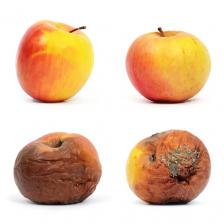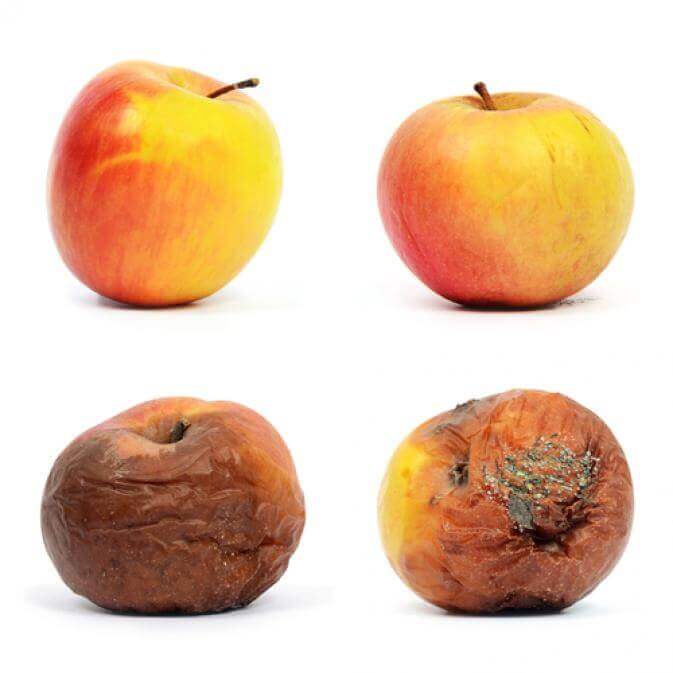Why Do Apples Turn Brown?
When you cut an apple, does it turn brown because it has started to rot, or is something else going on? Ask Science explains.
Lee Falin, PhD
Listen
Why Do Apples Turn Brown?

A young listener writes in with this question:
“Why do apples turn brown after you cut them?”
An excellent question!
The Secret Life of Fruit
Imagine for a second that you’re an apple. You’re hanging there on a tree, just minding your own business, when you feel it — the force of gravity has started to overcome the strength of your stem. You break free from the tree and start to fall. As you hurtle towards the earth, you want to scream, but realize you have no mouth. The air rushes past you, and then with a sudden, jarring impact, you are slammed against the ground. You roll for a few inches before coming to a stop, bruised and broken. Without the protection of your peel to protect you, it’s only a matter of time before you start to become overrun with bacteria and fungus.
A lesser fruit would have given up at this point, succumbing to rot. But not you, because your arsenal of defensive weapons isn’t limited to your armor-like peel, you also have access to chemical and biological weapons. One such weapon is a protein called catechol oxidase.
The Catechol Two-Step
To understand just what this weapon does, let’s examine its name in reverse. The last word ends in “-ase,” which means this is an enzyme. An enzyme is a special type of protein that helps a reaction speed up. Since it is an “oxidase,” this means that the reaction will oxidize something.

When ortho-quinone reacts with oxygen, it forms a brown-coloured compound called melanin, the same substance that causes your skin to tan when it is exposed to sunlight. Just like sun exposure, a little browning of your apple won’t hurt you. However the longer this process goes on, the less nutritious the apple becomes.
Biochemical Cease Fire
If you’re particularly averse to brown fruit, there are a couple of things you can do to slow down this reaction. First, like most chemical reactions, this one can be slowed down by exposure to cold. That’s why apples stored in the refrigerator don’t brown as fast as those left out on the counter.
Second, like most enzymes, catechol-oxidase operates most efficiently in a certain pH range. If the pH level leaves this optimal range, the enzyme will start to lose its shape, a process called denaturation. Since the enzyme is what speeds up the reaction, this denaturation will cause the reaction to proceed more slowly. A simple way to change the pH is to spray the apples with some lemon juice. Since lemon juice is a strong acid, this lowers the pH enough to denature the enzymes that cause browning.
Finally, you can put the apple someplace where there is no oxygen, such as outer space, or in a vacuum sealed bag with an oxygen absorber pack.
Conclusion
Now you know the true story behind why apples turn brown. This process holds true for bananas and potatoes as well. If you’re interested in learning more, here’s a fun experiment you can do in your very own kitchen.
If you liked today’s episode, you can become a fan of Ask Science on Facebook or follow me on Twitter. If you have a question that you’d like to see on a future episode, send me an email at everydayeinstein@quickanddirtytips.com
Apple image courtesy of Shutterstock.

